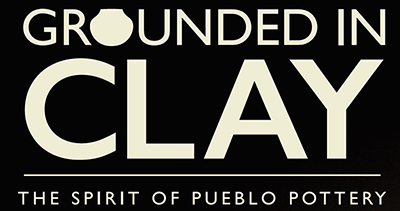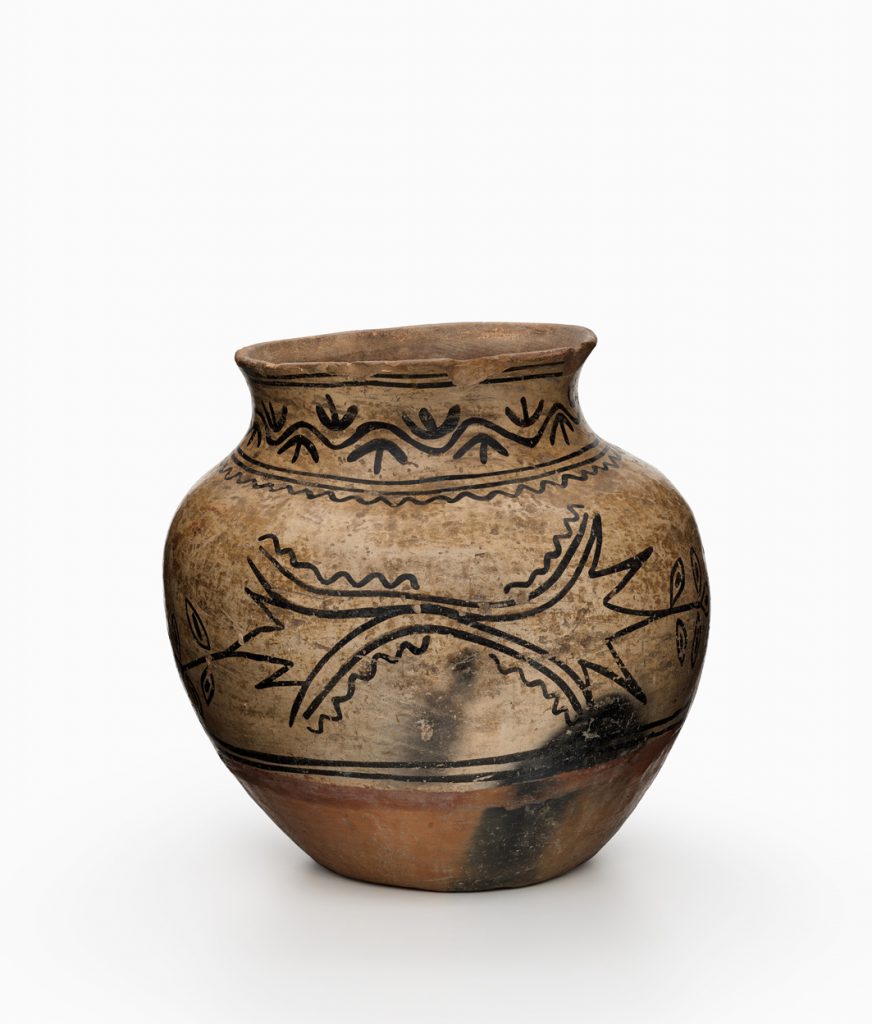Amy G. Johnson
Isleta, Diné/Navajo
Curator Amy G. Johnson (Isleta, Diné/Navajo) is a curator of collections at the Indian Pueblo Cultural Center, Albuquerque.
Amy chose the following for the Grounded in Clay exhibit:
A Tesuque Water Jar’s Journey
As I walked slowly through the storage shelves, I listened. Among the group of us there that day, I recognized clay artists whose works I admire. Familiar faces, some I knew personally, and many I did not. We were mostly quiet as we gravitated toward different shelves. The shelves are full of pottery creations from each Pueblo. The carpet of the long, rectangular room muffled our footsteps. I knew the piece that I chose would be unfamiliar. Not in type. Not in shape. I knew it would be from a Pueblo far from where I grew up.
Functional. Water. Seeds.
A thick-walled jar formed from natural clay and painted with ground pigments. The red-painted bottom is concave, and the lip is worn. Chips on the rim provide evidence of use. Black designs are painted on the exterior over a cream-colored slip. Such details align with many pottery pieces that I, myself, have handled and catalogued in my museum work. I think of a woman’s hands, fingers wet with clay, as she forms the coils into a familiar round shape. A bulbous body that will hold water. The short neck painted with a wavy line and what look like rounded arrows.
Are these “arrows” meant to mimic a farmer’s row of corn seedlings?
Is the horizontal design painted mid-body a sideways view of what the artist intended as the bursting forth of a seed?
Foundation. Commonalities. Resources.
I grew up in Isleta Pueblo, and my life is centered in and around Albuquerque. The Pueblo of Tesuque is north of Santa Fe. I chose this Tesuque water jar for its size and weight, and for its representation of variation. The clay and slip are very different on Isleta pottery. Brighter whites with a more orange-tinted red. That is what I am familiar with at home. I wondered what relationship, if any, Isleta had with Tesuque, other than a shared need for resources.
Patience. Journeys. Relations.
I think about the patience of the potter—gathering, molding, forming, sanding, polishing, painting, firing. The agility of the creative mind. I think about my choice, and how grateful I am to share this Tesuque water jar with a wider audience. I think about this Tesuque water jar—traveling, representing one potter’s creative and practical endeavor, sitting adjacent to its clay relatives.

